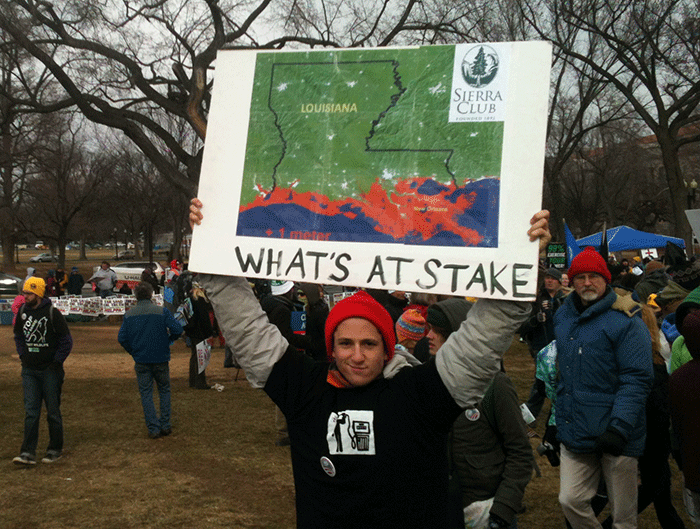With a late spring snowfall, at least by the standards of the past few years, and with the nation riveted, after the march on Washington in February, on the showdown over President Obama’s looming decision on whether to greenlight the Keystone XL pipeline that would massively change the Canadian Tar Sands, this seems like a good time for a climate change update.
For starters here’s a cool graphic that shows the amount of carbon dioxide that has been released into the atmosphere to date, shows annual releases, and amounts that could be released that are currently stored in existing fossil fuel reserves.
Hopefully we all know by now that 2012 was the hottest year on record. Looking ahead in 2013, scientists predict that Phoenix will continue to set records for hot weather. The city averages over 100 days a year over 100 degrees, but in 2012 it set a new record with 33 straight days over 100 degrees. Texas and Florida droughts are predicted to grow worse and the Canadian glaciers are melting at an unprecedented rate.

An effective protest sign at the February march in Washington.
For those of you counting, February 2013 marked the 336th straight month when global temperatures exceeded the 20th Century average.
Last summer, following the impacts of Tropical Storm Irene, and many others, but before what’s come to be known as Superstorm Sandy in the fall of 2012, NASA climate scientist James Hansen published a terrific journal article on how climate change is likely to impact areas. Among other things he talks about massive changes to the earth’s water cycle, meaning more intense storms, flooding, drought, etc. So, for a place like the Adirondacks, a historically wet place due to our geography and topography, this means extreme weather is the new normal. Here’s another piece about research that argues Hurricane Katrina-like storm surges are now twice as likely. See images of upheaval in the Adirondacks from Tropical Storm Irene here.
Other impacts of climate change mark an increase in allergies and asthma incidents and more typical southern tree and plant species are creeping north.
And, changes are accelerating. New research shows that temperatures are rising faster than predicted. (The actual journal article is locked, but various press accounts describe it.) Since the last period of major glaciation, global temperatures have experienced more rapid change over the last 100 years than at any time in the last 11,000 years. CNN breaks down the story and the Associated Press also picked it up.
Last, if you want a 1-stop comprehensive piece on the folly of the Keystone XL pipeline project, read this piece. Here’s a cool multi-media overview of the issues. Always powerful, National Geographic spotlights the Tar Sands oil extraction in pictures here and here.
Energy efficiency and conservation are the directions to aggressively pursue rather than new drilling. 350.org has lots more on Keystone.





